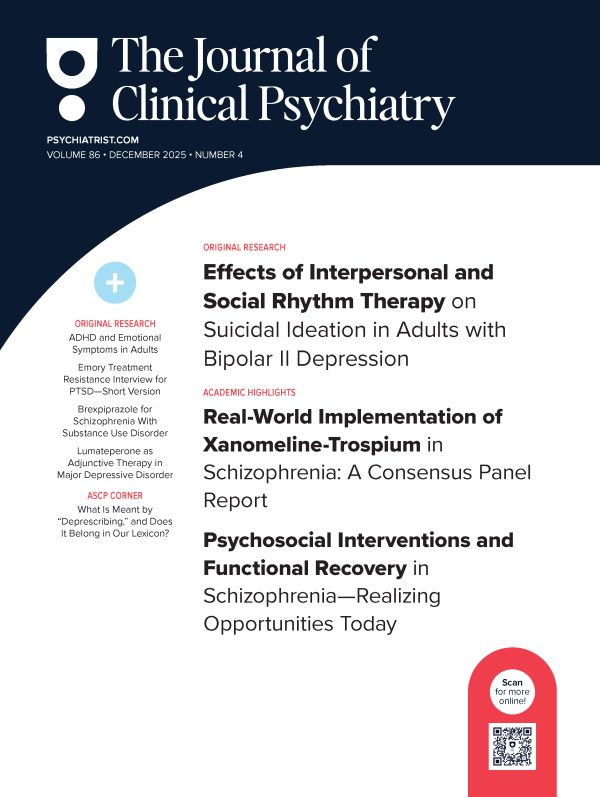Objective: To examine various forms of suicidality specified in DSM-IV and their clinical characteristics in a large sample of children and adolescents with major depressive disorder (MDD).
Method: Subjects included 553 children and adolescents (aged 7.0-14.9 years) recruited between April 2000 and December 2004 from 23 mental health facilities in Hungary. Subjects received standardized clinical evaluations and best-estimate consensus DSM-IV diagnoses of MDD. All subjects were in a current episode of MDD at their assessment date.
Results: Approximately 68% of the sample had recurrent thoughts of death, 48% had suicidal ideation, 30% had suicide plan, and 12% had attempted suicide. Compared with nonsuicidal peers, suicidal children and adolescents were more severely depressed, had more depressive symptoms, and more likely had comorbid disorders. However, depressed children and adolescents with various forms of suicidality were very similar in clinical characteristics. Feelings of worthlessness, depressed mood, psychomotor agitation, and comorbid separation anxiety and conduct disorders were independent correlates of at least 1 form of suicidality. Only feelings of worthlessness was related to all 4 suicidal behaviors, after adjustment for other depressive symptoms, comorbid disorders, and demographics.
Conclusion: Clinical characteristics differ between nonsuicidal and suicidal children and adolescents but are very similar across various forms of suicidality. Feelings of worthlessness may play a central role in the development of suicidal behavior. Interventions toward the enhancement of self-esteem and amelioration of underlying psychopathology may be crucial for the prevention of suicide attempts in depressed children and adolescents.
Please sign in or purchase this PDF for $40.00.


